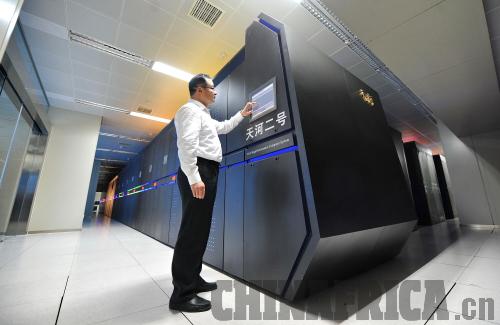|

Space emissaries
Before joining the manned space flight program, Nie, Zhang and Wang were seasoned pilots in the national air force.
Wang is China's first space traveler born in the 1980s, a generation that grew up in the era of China's reform and opening up.
Nie, a two-time space traveler, first visited space in 2005, aboard the Shenzhou-6 spacecraft.
The People's Liberation Army (PLA) recruited Nie in 1983. He served as a navigation director of a PLA Air Force division and a first-class pilot with 1,480 flight hours. He was selected to become one of China's first astronauts in January 1998.
In April, 48-year-old Nie was selected to be a prime crew member of the Shenzhou-10 space mission. He is responsible for the manual docking operation.
Zhang, 47, will assist Nie in the manual docking operation.
Zhang joined the army as an airman in 1985 and logged 1,000 hours of safe flying. In January 1998, Zhang started training with China's first batch of astronauts. He now holds the rank of senior colonel, he also filmed Wang's space lecture.
Wang is responsible for monitoring the conditions of the spacecraft, space experiments and equipment. She is also the second Chinese woman in space, following Liu Yang who was aboard Shenzhou-9 last June.
Pang Zhihao, a researcher with the China Academy of Space Technology, said that female astronauts are more "keen and sensitive and have better communication skills than their male counterparts." He said women were also good at dealing with relationships with their colleagues in space, which would be an important issue on a long mission such as a trip to Mars.
Growing up in a farmer's family in east China's Shandong Province, the 33-year-old joined in the PLA Air Force when she was 17 years old, and became an elite pilot after mastering four different types of aircraft. She has nine years of experience as a transport aircraft pilot and has logged 1,600 flight hours.
She joined China's second batch of female astronauts in 2010, and was on standby for the Shenzhou-9 mission.
"We are all students in facing the vast universe. We are looking forward to joining our young friends to learn and explore the mystical and beautiful universe," said Wang at the June 10 press conference. CA
Tech Bytes
» Chinese scientists announced recently that China has once again built the world's fastest supercomputer, capable of performing 33.86 quadrillion operations per second, surpassing the U.S. Titan supercomputer.
The Tianhe-2, or Milkyway-2, has a peak performance speed of 54.9 quadrillion operations per second, according to the National University of Defense Technology (NUDT), which built the computer.
This is the second time China has made it to the first place in the Top 500 list of the world's most powerful supercomputers. Tianhe-2's predecessor, Tianhe-1A, was the world's fastest supercomputer from November 2010 to June 2011, when it was surpassed by Japan's K computer.
Matching homegrown Feiteng-1500 CPUs as well as Intel Xeon and Xeon Phi processors, Tianhe-2 was almost twice as fast as the second computer, Titan, which is capable of running at 17.6 quadrillion operations per second.
Sequoia, another U.S.-developed supercomputer, ranked third in the list, followed by Japan's K computer.
Costing $100 million, Tianhe-2 is expected to be operational at the supercomputer center in Guangzhou City in south China's Guangdong Province later this year.
"Ranking is not so important," said Li Nan, spokesman of the Tianhe-2 project. "We are producing supercomputers with a fundamental purpose of providing a driving force for the construction of an innovation-oriented country and solutions to sciences that concern the future development of human beings."
Experts believed Tianhe-2 demonstrates that China has been developing its own chip technology, which will ensure that the country plays an important role in the world's high-performance computing (HPC).
Jack Dongarra, one of the editors of Top 500, said he was impressed with Tianhe-2's interconnect, operating system and software, which are mainly Chinese.
"The HPC development has enhanced China's competitiveness," he said.
Rajeeb Hazra, Intel's Vice President, said the production of Tianhe-2 will not only benefit Chinese sciences and industries, but also provide sound infrastructure for the growing global demands of big data processing.
The NUDT said it would produce a supercomputer performing 100 quadrillion operations per second by 2015 and further raise it by 10 times around 2020. |